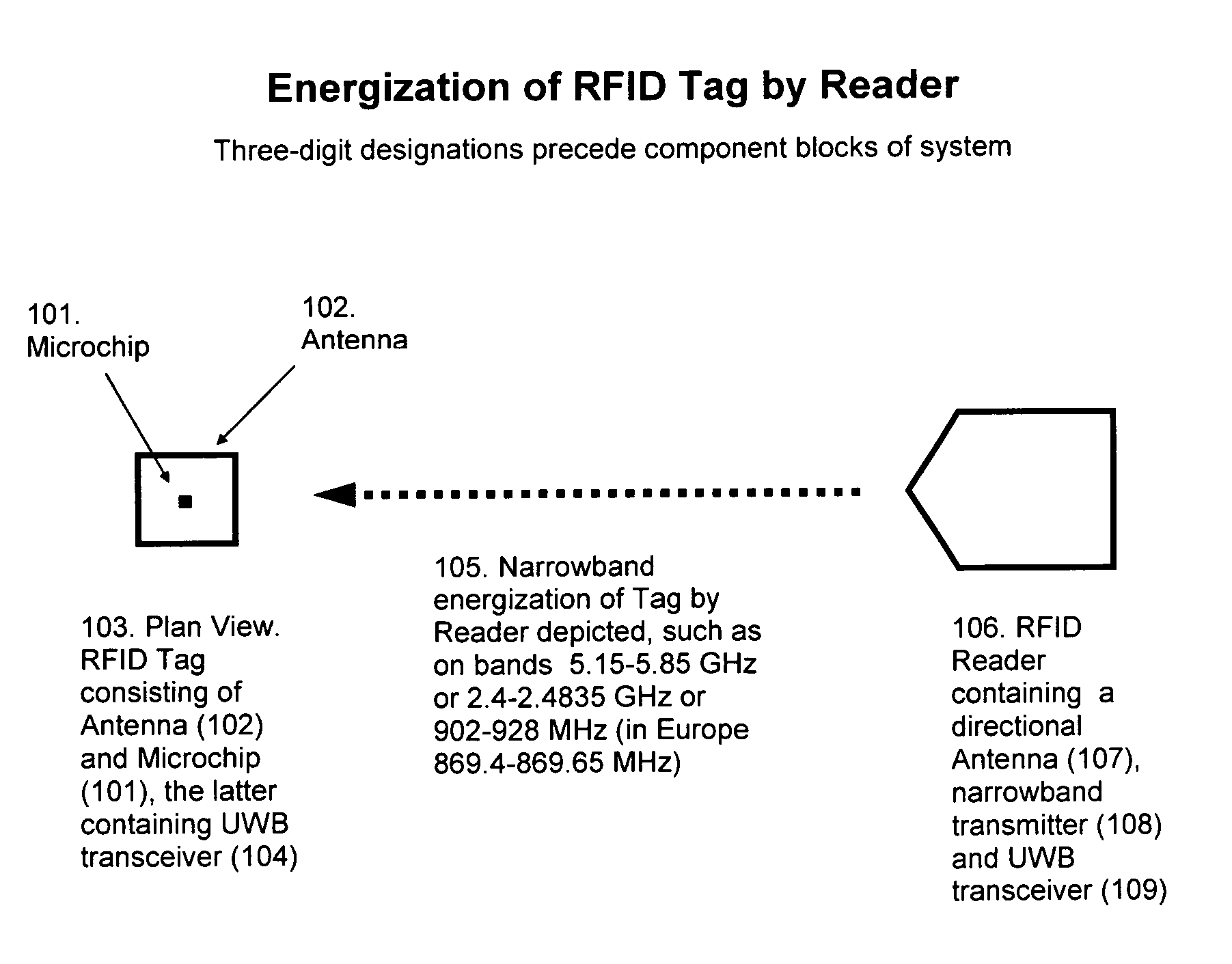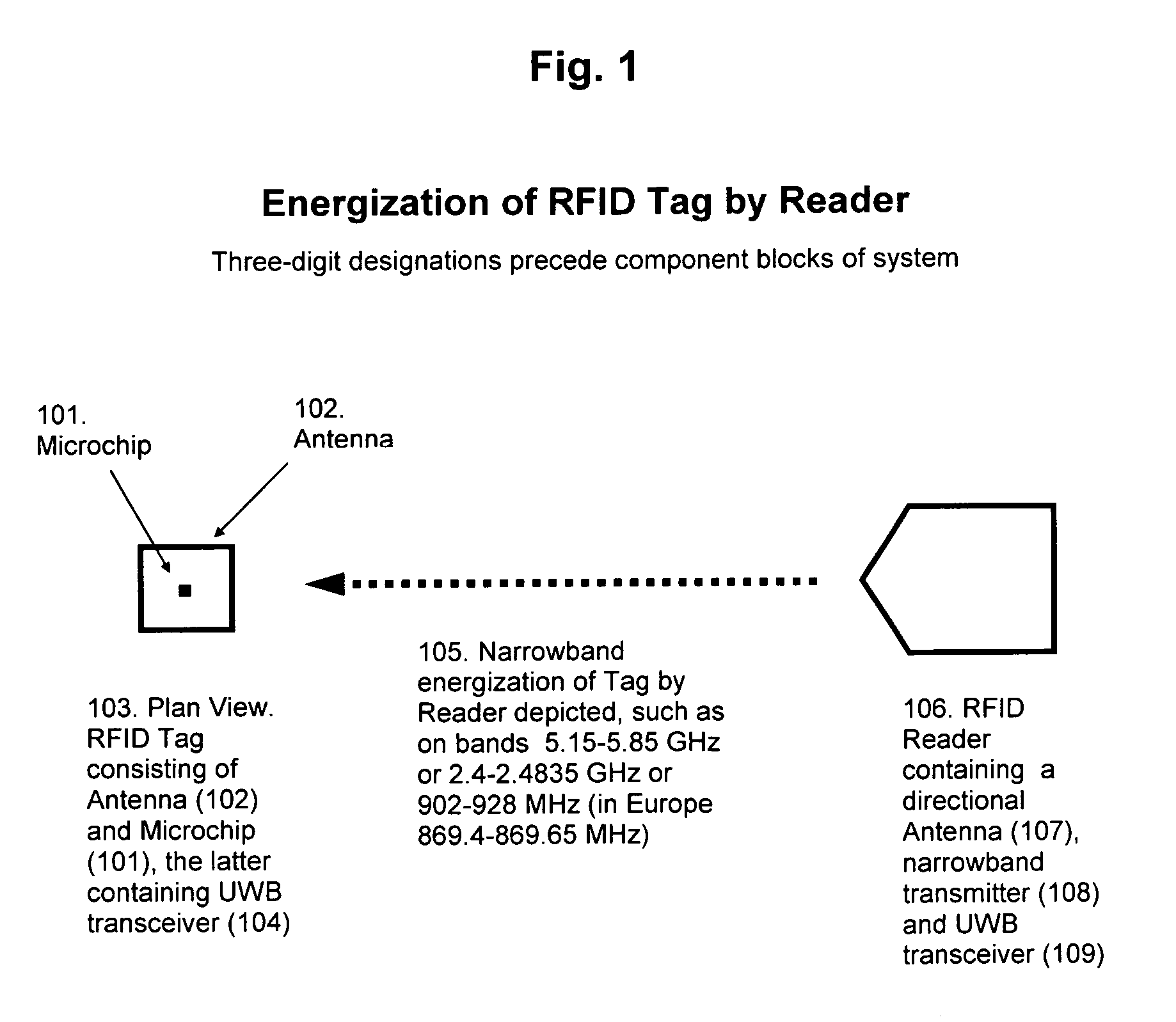Method and system for miniature passive RFID tags and readers
a passive rfid and reader technology, applied in the field of contactless passive rfids, can solve the problems of too small range for reader and tag to operate effectively, too large dimensions of coils, sheets on which the coils are affixed, etc., and achieves the effects of reducing the physical size of rfid tags, facilitating handling, storage and application, and improving reliability and dependability of operation
- Summary
- Abstract
- Description
- Claims
- Application Information
AI Technical Summary
Benefits of technology
Problems solved by technology
Method used
Image
Examples
Embodiment Construction
[0034]The Reader powers the Tag by transmission of a relatively high power narrowband carrier frequency, but communicates to / from the Tag by comparatively low power means over a wideband portion of the frequency spectrum. The energization of the Microchip on the Tag takes place by a different mechanism and uses a different method than is used for communication between Reader and Tag.
[0035]Reader and Tag communicate data by means of ultra wideband transmission and reception on a portion or all of the 3.1-10.6 GHz band. The total power for transmission by this means, in either direction, but in particular from Tag to is Reader, is well under a milliwatt. The Antenna for operation at this power is a small patch antenna. The size of the patch Antenna has already been demonstrated with antennas of approximately 19 mm by 25 mm in size, 17 mm by 20 mm in size, 8 mm by 10 mm in size, and 6 mm by 8 mm in size. The low power consumption of the Microchip means that the energy capture and stora...
PUM
 Login to View More
Login to View More Abstract
Description
Claims
Application Information
 Login to View More
Login to View More - R&D
- Intellectual Property
- Life Sciences
- Materials
- Tech Scout
- Unparalleled Data Quality
- Higher Quality Content
- 60% Fewer Hallucinations
Browse by: Latest US Patents, China's latest patents, Technical Efficacy Thesaurus, Application Domain, Technology Topic, Popular Technical Reports.
© 2025 PatSnap. All rights reserved.Legal|Privacy policy|Modern Slavery Act Transparency Statement|Sitemap|About US| Contact US: help@patsnap.com



